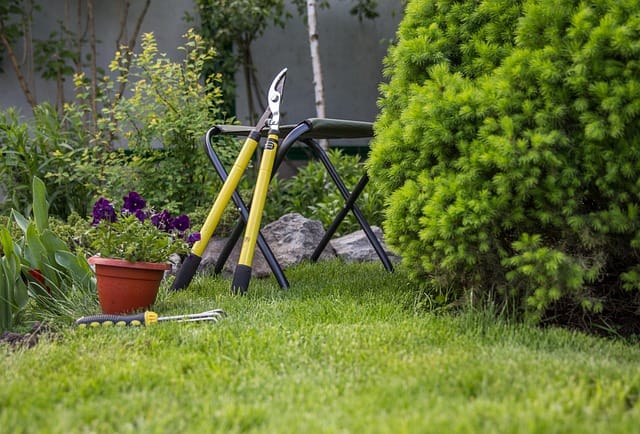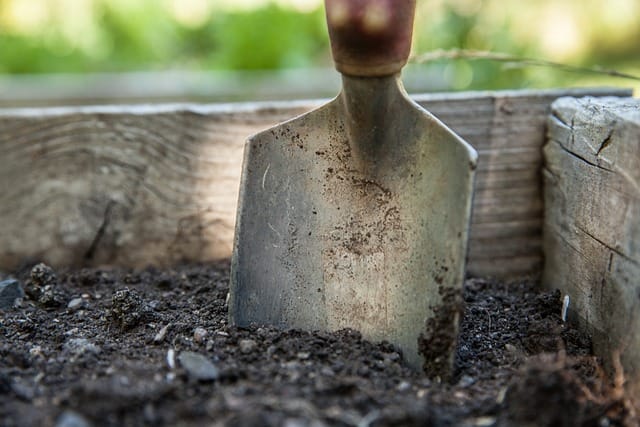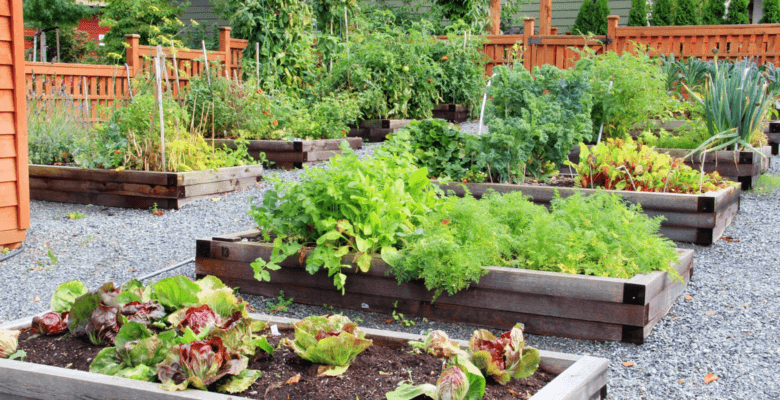Disclosure: This post may contain affiliate links, meaning we get a commission if you decide to make a purchase through our links, at no cost to you. See our full disclosure here.
Alright, dirt divas and dudes, gather ’round! Let’s talk gardening, shall we? I remember my first try growing tomatoes. I was so excited, picturing juicy red tomatoes bursting with flavor. What did I get instead? Tiny, sad little things that looked more like cherry tomatoes’ grumpy cousins. Yeah, gardening fails happen to the best of us. But guess what? They’re part of the process! And that’s why I’m here, Ivy Green, your sassy gardening guru, ready to guide you through the jungle that is…your backyard.
Welcome to DirtDivaDiaries, where we believe in the unique joy of nurturing your plants, a journey as diverse as the gardeners. Forget those stuffy gardening books with their mile-long lists of rules and regulations. Here, we ditch the drama and get our hands dirty together. The fun of gardening should outweigh the work; imagine the satisfying sounds of snipping shears, the sight of flourishing plants, and the fresh scent of herbs. It’s about experimenting, learning from your mistakes (and trust me, there will be mistakes!), and creating a little slice of green heaven that’s uniquely yours.

In this post, we’re diving headfirst into beginner gardening advice. We’ll cover everything from getting down and dirty with your soil (yes, literally!) to choosing the perfect plants for your space, mastering the art of planting, keeping your garden happy and healthy, and enjoying your tasty harvest. We’ll even tackle some common gardening woes because, let’s face it, things don’t always go according to plan. So, grab your gardening gloves (or don’t, if you’re feeling wild!), and let’s get growing!
First, let’s talk about the foundation of any magnificent garden–the soil!
Think of your soil as the cozy little home for your plants. Just like you need a comfy bed and a good meal to thrive, your plants need healthy soil to grow big and strong. Healthy soil, rich in nutrients and beneficial microbes, is like a well-stocked pantry and a five-star hotel for your plants, offering them everything they need to thrive. It provides them with the nutrients they need, holds the right amount of water, and gives their roots room to stretch out and breathe.
Now, let’s demystify this whole soil thing, shall we?
You’ve probably heard fancy terms like “sandy,” “clay,” and “loam.” Don’t let it scare you! Sandy soil is like, well, sand. It’s loose, drains quickly, and can feel gritty. Clay soil is the opposite–thick, sticky, and holds onto water like a hoarder. Loam is the Goldilocks of soil–a perfect mix of sand, clay, and organic matter. It’s not too sandy, not too clay-y, just right.

You might be thinking, “How do I know what kind of soil I have?” Great question! You could get all fancy and send a sample to a lab, but a simple squeeze test works wonders for beginners. Grab a handful of moist soil. If it crumbles easily, you’ve probably got sandy soil. Is it sticking together in a ball? It’s likely clay. You’re in the loam zone if it forms a loose ball that breaks apart easily!
No matter what type of soil you have, a magic ingredient can make it even better: compost! Think of compost as the superfood of the soil world. It’s made from decomposed organic matter like kitchen scraps and yard waste and packed with nutrients that plants love. Adding compost to your soil is like giving your plants a vitamin boost, enriching the earth with dark, crumbly goodness, and creating a cozy blanket that keeps moisture and warmth. It improves drainage in clay soil, helps sandy soil retain moisture, and adds those all-important nutrients. Easy peasy, right? You can buy compost at your local garden center or make your own. More on that later!
Alright, my green-thumb wannabes, let’s talk plant picks!
Choosing the right plants is like picking the right dance partner–you gotta find someone who grooves to your beat (or, in this case, thrives in your climate and growing conditions). You wouldn’t try to waltz with someone who only knows how to break dance. The same goes for plants. A sun-loving tomato will not be happy in a shady corner, and a delicate herb might shrivel up in the scorching desert heat.
So, how do you find your plant soulmates?
First, get to know your growing zone. A Google search will tell you what zone you’re in, giving you a general idea of what plants will thrive in your area. However, if you sign up for our newsletter, one thing we send you for free is a custom report based on your zip code. This report tells you about your zone and a lot more-first and last frost dates, unique challenges, and more, all customized for your zip code. Plus, our newsletter will provide you with zone-specific advice.
Once you know your zone, consider how much sun your garden gets. Is it full sun (at least six hours a day), partial shade (four to six hours), or full shade (less than four hours)? Knowing this will help you narrow down your choices.
Now, for some beginner-friendly recommendations!
If you’re new to this whole gardening thing, start with easy-to-grow veggies like lettuce, radishes, and zucchini. Basil, mint, and chives are easy-to-grow herbs that deliver a potent flavor punch to your dishes; their aromas alone will invigorate your kitchen. And if you’re feeling adventurous, try growing some berries! Strawberries and raspberries are relatively easy to care for and oh-so-delicious.


But here’s the thing: don’t be afraid to experiment! Gardening is all about trying new things and seeing what works. You may discover a hidden talent for growing exotic peppers or realize that you’re more of a succulent person. The point is, have fun with it! And remember, the best plant to grow is the one you love to eat the most.
Finally, let’s talk about seeds versus transplants.
Starting from seed is cheaper and gives you more variety, but requires more time and effort. Buying transplants (those little plants already growing in pots) is more convenient, but it can be more expensive. For beginners, I recommend starting with transplants for some veggies and herbs and maybe trying your hand at seeds for others. It’s all about finding what works best for you and your gardening style.
Now, let’s get those green babies into the ground!
This is where the magic happens: tiny seeds and little transplants transform into bountiful harvests. But before you shove plants willy-nilly into the dirt, let’s cover some planting basics.
First things first: when to plant.
Timing is everything in the gardening world. You wouldn’t wear a bikini in a blizzard, and you shouldn’t plant tomatoes in the middle of winter. Check your local gardening calendar or seed packets for the best growing time in your area. You want to wait until after the last frost in spring before planting most veggies and herbs.
Next up: How deep and how far apart?
This is where those plant tags come in handy. Those little tags aren’t just there to look pretty; they’re packed with valuable information. They’ll tell you how much sun the plant needs, how big it will get, and how far apart to space it. Think of it as a cheat sheet for plant success. Don’t just skim it. Read it, embrace it, love it!
Now, let’s talk watering.
This is where many newbie gardeners go wrong. They either drown their plants with too much love (aka water) or forget about them entirely and leave them parched in the sun. The key is to find the happy medium. Stick your finger about an inch into the soil. If it feels dry, it’s time to water. If it feels moist, hold off. And remember, different plants have different watering needs, so pay attention to those plant tags!
Finally, let’s talk sunlight.
Plants are like solar panels–they need sunlight to make their food. Most veggies and herbs need at least six hours of sun daily, but some can tolerate less. So, before you plant, scope out your yard and find the perfect spot for your green dream team. Remember, a little planning goes a long way in creating a happy and thriving garden.
Next up, maintenance and keeping those plants happy
Now, let’s talk about keeping those green babies happy and healthy. This is where the real work begins, but trust me, it’s also where the real magic happens. Think of it as nurturing your little plant children–they need love, attention, and a little TLC to thrive.
First up: weeding.
Now, I know weeding isn’t exactly the most glamorous part of gardening. It can be a drag, but trust me, it’s essential. Weeds are like those annoying party crashers who eat all the snacks and hog the dance floor. They steal water and nutrients from your precious plants, leaving them weak and vulnerable. So, grab your trusty weeding tool (or just your bare hands if you’re feeling primal) and get those weeds outta there! The sooner you tackle them, the easier it’ll be.
Next up: fertilizing.
Think of fertilizer as a vitamin boost for your plants. It gives them the extra nutrients they need to grow big and healthy. But don’t go crazy with the fertilizer, my friends! Too much of a good thing can actually harm your plants. For beginners, I recommend using a slow-release, organic fertilizer. It’s gentle and won’t burn your plants.
Now, let’s talk about pests and diseases.

What about those inevitable hiccups that come with the gardening territory? Because things will go wrong. It’s just part of the process. It’s like a rite of passage, a test of your gardening grit. So, don’t throw your trowel in the towel when you encounter a few bumps in the road. Instead, grab a glass of wine (or your beverage of choice), put on your sassy pants, and let’s troubleshoot!
One common issue is pests.
Nobody wants creepy crawlies munching on their precious plants or some nasty fungus turning their leaves brown. But before you reach for the harsh chemicals, try some natural and organic methods. Neem oil is an excellent all-natural pesticide, and you can even make pest sprays using kitchen ingredients. And remember, a healthy plant is less likely to get sick in the first place, so keep those plants happy and well-fed!

Ivy’s Pro Tip: Wanna know what pests are attacking your plants? Stay up late and grab a flashlight! Most garden pests come out at night. So, sneak up on those little buggers and identification of your problem will be much easier.
Another common problem is diseases.
Fungal infections and bacterial wilts–can all make your plants look like they’ve seen better days. The key here is prevention. Ensure your plants have good air circulation, don’t over-water them, and remove any diseased leaves or stems immediately.
There are also nutrient deficiencies. If your plants look pale and lackluster, they might lack some essential nutrients. A good organic fertilizer can help with this, but it’s also important to ensure your soil is healthy and well-balanced.
Now, if you’re facing a gardening mystery you can’t solve alone, don’t be afraid to ask for help! Your local garden center is a great resource, and, of course, you can always check back here at DirtDivaDiaries.com for more sassy gardening tips and tricks. Really stuck? Shoot us an email, and we will unleash our friend Scooby to solve your mystery for you.
Perhaps the most important piece of beginner gardening advice I can give you – remember that gardening is a learning process. Everyone makes mistakes, even yours truly. So, don’t beat yourself up if things don’t go perfectly. Just learn from your mishaps, dust yourself off, and get back in the garden. The joy of growing your own food is worth it, even when things go a little sideways.
Finally, my most important advice: observe, observe, observe!
Get to know your plants. Pay attention to their leaves, stems, and flowers (or fruits!). Are they looking vibrant and happy, or are they droopy and sad? The more you observe, the better you’ll understand their needs. It’s like developing a sixth sense of plant communication! And trust me, your plants will thank you for it.
It’s finally time for the harvest!
Ah, the moment you’ve all been waiting for! It’s time to reap the rewards of your hard work and taste your gardening efforts’ sweet, sweet success. Harvesting a ripe tomato from your vine or cutting a sprig of basil that you grew from seed can be a rewarding experience. It’s like a high-five from Mother Nature herself!
But how do you know when your fruits and veggies are ready for their close-up (or, you know, ready to be devoured)? Well, my little green thumbs, it’s all about paying attention to the signs. Tomatoes should be plump and vibrantly colored, peppers should feel firm and heavy, and leafy greens should be crisp and vibrant. A little research goes a long way here, too! Check our plant index to learn more about individual plants.
Now, what to do with all that deliciousness?
The possibilities are endless! Whip up a fresh salsa with your homegrown tomatoes and peppers, toss some herbs into a flavorful pasta dish, or bake a sweet berry pie that will make your taste buds sing. Get creative in the kitchen and let your garden inspire you!
And here’s my last piece of beginner gardening advice: share the love!
Spread the gardening joy by sharing your harvest with friends, family, and neighbors. There’s nothing quite like the feeling of giving someone a gift that you grew with your own two hands. It’s a way to connect with your community, spread happiness, and inspire someone else to start their gardening journey. So, go forth and harvest, my friends! And don’t forget to savor every delicious bite.
Alright, my dirt divas and dudes, you’ve made it to the end!

Give yourselves a pat on the back (and a little celebratory dance in your garden). We’ve covered a lot of ground today with this beginner gardening advice, from the nitty-gritty of soil science to the joy of harvesting your homegrown goodies. Remember, healthy soil is the foundation of a happy garden, so get down and dirty with that compost! Choose plants that love your climate and give them the right amount of sun and water. Experiment and try new things; don’t let a few weeds or pests discourage you. Gardening is a journey, not a destination, so enjoy the learning process!
Now, go forth and grow, my friends! Get your hands dirty, embrace the chaos, and create a unique garden. At DirtDivaDiaries, we are all about “growing your own way.” Whether you’re growing juicy tomatoes, fragrant herbs, or just a few cheerful flowers, remember that every bit of green makes the world happier.
I’d love to hear about your gardening adventures! Share your successes, failures, and questions in the comments below. Let’s create a community of sassy gardeners who support and inspire each other. And don’t forget to check out the other awesome content on DirtDivaDiaries.com for more tips, tricks, and inspiration. Subscribe to our newsletter so you never miss a sassy gardening update and become part of the Dirt Diva Diaries’ family. Now, get out there and grow your own way!
Disclaimer: This post is for informational purposes only and should not be construed as health, wellness or nutrition advice. Please see our full disclaimers here.


Leave a Reply